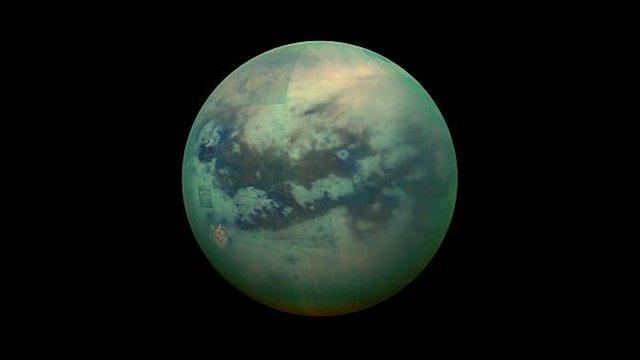
Titan is the largest moon of the planet Saturn. Its specialty is not only that, Titan also became the only place in our solar system that is very similar to Earth due to its thick atmosphere and the presence of liquid on its surface.
Thanks to two recent studies by a team of researchers from Cornell University published in Geophysical Research Letters, we can now add one more characteristic similarity Titan with Earth, namely sea level.
In the first study, the research team succeeded in depicting the topographical map of Titan. This map then became the foundation for a second study which found that Titan's largest seas and lakes have equipotential surfaces or equal potential to have parallel surfaces.
Using data from multiple sources, including data from Cassini's exploratory satellites, the team led by Alex Hayes can depict a new topographical map. This map is not perfect with many unrecorded areas, but this Titan map is the most detailed ever made.
The one-year-old portrait succeeded in uncovering new features, the 700-meter-high mountains as well as the depression in the equatorial Titan that looks like a dry ocean or cryovolcanic flow.
In addition, the researchers also learned that Titan has a shape that is more paced or flat than we had previously thought. This means Titan has a changing crust.
Sea and Lake Titan Connected
In the second study, the team used new information from topographic images to show that average sea level can be found on Titan.
It also found that Titan's greatest sea and lake surface is at a consistent elevation across its surface. The same can be seen in how the Atlantic and Pacific Oceans are at the same sea level.
Not only that, there is also a small lake located a few meters higher than the sea level on Titan. The same can also be seen on Earth with the example of Lake Titicaca in the Andes Mountains, which is at an altitude of 3 thousand meters above sea level.
The results of this study show that the oceans and lakes on Titan are connected to each other. According to the researchers, the most likely explanation is that they are connected through a layer of aquifer or a layer that can deliver water beneath the surface of Titan.
"We do not see any empty lakes beneath a liquid-filled lake because, if they reach the level below it, the empty lake will fill itself up, referring to the subsurface flow and they are connected to each other," Hayes explained. .
"It also means that there is a liquid hydrocarbon (liquid in Titan) stored beneath the surface of Titan."
The existence of a hydrocarbon stream beneath the surface of Titan, similar to how water flows beneath the Earth's surface. This results in every sea and lake having the same surface elevation.
Although the presence of hydrocarbons beneath the surface of Titan has not been proven with certainty, this could encourage the formation of a new mission to investigate the twin of this Earth.